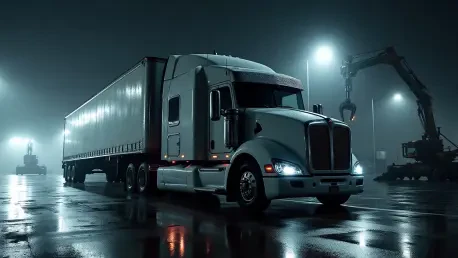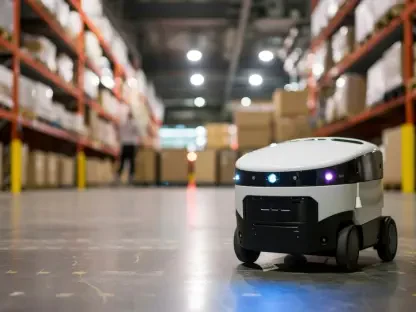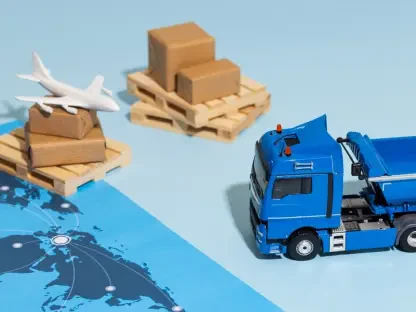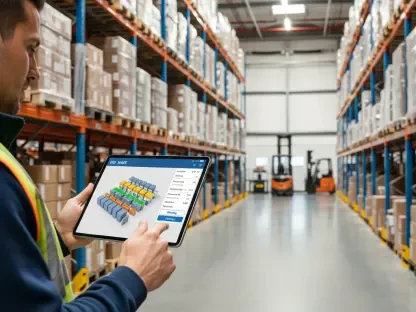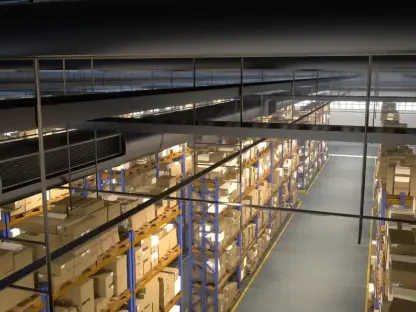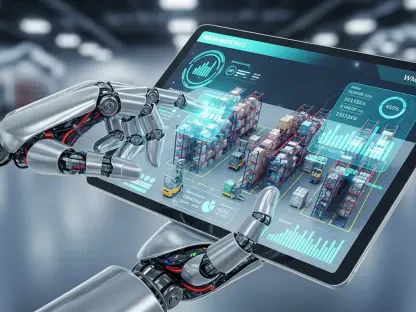In the world of logistics, the rapid growth of e-commerce has put immense pressure on companies like FedEx to innovate and automate processes traditionally handled by human labor. Rohit Laila, a seasoned expert in logistics, discusses the challenges and advancements in truck loading and unloading automation. With decades of experience, Rohit provides insight into how automation is set to revolutionize this critical aspect of supply chain management.
What are the current challenges FedEx faces with automating truck loading and unloading?
Automating truck loading and unloading is no small feat. FedEx, like many logistics companies, is grappling with the complexities of handling diverse and ever-changing parcel sizes and weights. This process, once dominated by human intuition and flexibility, must be meticulously broken down so machines can understand and execute it effectively. The challenge amplifies when dealing with loose-loaded packages that are packed tightly into trailers—it’s like solving a giant three-dimensional puzzle.
Why is truck loading and unloading considered a complex problem in the logistics industry?
The complexity lies in the unpredictability of the items being handled. Each truck could carry thousands of parcels, all varying in size, shape, and orientation, demanding an adaptability that doesn’t come easily to machines. The environment within a truck is often cramped and chaotic, requiring logistics systems to be incredibly precise and adaptive in real time, which is naturally more challenging for robots than for humans.
Can you explain the difference between truck loading/unloading and palletizing/depalletizing?
Certainly. Truck loading and unloading involve directly moving the goods into or out of a vehicle, while palletizing and depalletizing refer to organizing these goods into stacks within a warehouse. Palletizing is a more structured process, often dealing with uniform items and hence is more amenable to automation. In contrast, truck operations require handling a more diverse mix of items directly, complicating automation efforts.
What makes loose loading in truck operations a particular challenge for automation?
Loose loading means items are placed individually rather than on pallets, leading to varying orientations and fits within a truck. Robots must continuously adjust to the heterogeneous and unstructured arrangement of goods, maintain delicate balance, and avoid damaging items, which is quite a sophisticated operation compared to the predictable environment of palletized goods.
How has FedEx approached the development of robotic systems for truck loading and unloading so far?
FedEx has been proactive, investing in trials and partnerships, such as working with companies like Nimble to develop systems that could handle loose-loaded packages. They have been exploring technologies involving robotics and AI that can precisely navigate complex environments and adapt to unpredictable conditions encountered during loading and unloading.
What role does FedEx’s investment in Nimble play in tackling the automation challenge?
The partnership is pivotal, as Nimble brings advanced robotics and AI expertise to the table. This collaboration aims to create systems capable of identifying and handling parcels with greater autonomy and efficiency, eventually leading to breakthroughs that could redefine logistics operations for FedEx and the industry as a whole.
How do robotic palletizers and depalletizers operate in controlled environments?
In controlled settings, robotic palletizers and depalletizers efficiently manage items of consistent size and shape. These robots are programmed to execute repetitive tasks with precision, which is easier when the variables—the items—don’t vary much. This predictability streamlines operations, but transitioning this robustness to the varied conditions of truck operations remains a hurdle.
Which companies are leading in the development of robotic solutions for automated truck loading and unloading?
Several companies are pioneering this space. Ancra Systems, Dexterity AI, Boston Dynamics, Pickle Robot, and Slip Robotics are some key players making strides with innovative solutions. Each brings unique technologies and approaches to address the complex problem of automating truck tasks effectively.
How does Ancra Systems’ Automated Truck Loading Systems (ATLS) work, and what are its benefits?
Ancra Systems’ ATLS utilizes conveyor mechanisms that extend into trailers, making the movement of standardized goods quick and reliable. These systems drastically cut down truck turnaround times, proving highly beneficial in structured operations, thereby enhancing efficiency and increasing throughput.
What specific solutions does Dexterity AI offer, and how do they plan to address loose-loaded truck tasks?
Dexterity AI has developed the DexR, a dual-arm robot equipped with vision, force sensing, and sophisticated algorithms. This system is designed to intelligently handle a variety of parcels, adapting dynamically to changes in package size, weight, and position, providing a comprehensive approach to the unique challenges posed by loose-loaded truck tasks.
How does Boston Dynamics’ Stretch Robot function, and what role does it play in the unloading process?
Boston Dynamics’ Stretch Robot employs a vacuum gripper over a mobile base to unload packages efficiently. With its advanced vision systems, it can identify and move packages swiftly, making it highly effective for unloading operations. Its ability to deal with hundreds of packages an hour offers significant advantages for high-volume parcel centers.
Could you describe Pickle Robot’s approach to truck unloading and its unique features?
Pickle Robot focuses on affordable, easy-to-implement solutions for unloading. Their robots, like Dill, utilize suction-based grippers and perception systems for handling loose packages. The simplicity and effectiveness of their design mean they can be integrated into existing infrastructure without extensive modifications, offering practical benefits.
How does Slip Robotics’ AMR system differ from the traditional robotic solutions in truck loading?
Slip Robotics’ AMR systems focus on moving entire pallet-sized slip sheets rather than individual packages. This strategy works best with palletized goods and simplifies the interface between trucks and warehouses, demonstrating a different take on robotics that still significantly improves loading and unloading processes.
Why does automation in truck loading/unloading matter in today’s logistic industry?
The logistics industry is under pressure from labor shortages and escalating costs, coupled with rising e-commerce demands. Automating loading and unloading not only eases physical tolls on human workers but ensures companies can scale operations sustainably, enhancing efficiency and reducing costs in the long run.
What benefits could companies like FedEx gain from successfully automating these tasks?
Successful automation could mean a transformative increase in efficiency and throughput, reduced operational costs, and improved worker safety. Moreover, optimizing how packages are loaded can enhance trailer utilization, cutting transportation costs and improving the speed and reliability of delivery networks.
In your opinion, what are the key factors that will lead to successfully solving the automation challenge in truck loading/unloading?
Mastering this challenge will require seamless integration of cutting-edge robotics, artificial intelligence, and machine learning to create adaptable systems capable of operating in diverse environments. Collaborative innovation across the industry and investment in robust trials and scalable technologies are also vital to achieving success.
How do labor shortages and rising labor costs influence the push towards automation in logistics?
Labor shortages and rising costs make the current human-centric model increasingly unsustainable. Automation offers a viable path to not just replace but augment human roles, ensuring operations remain cost-effective and scalable, which is crucial as demand continues to grow. Automation also provides strategic resilience against workforce unpredictability.
